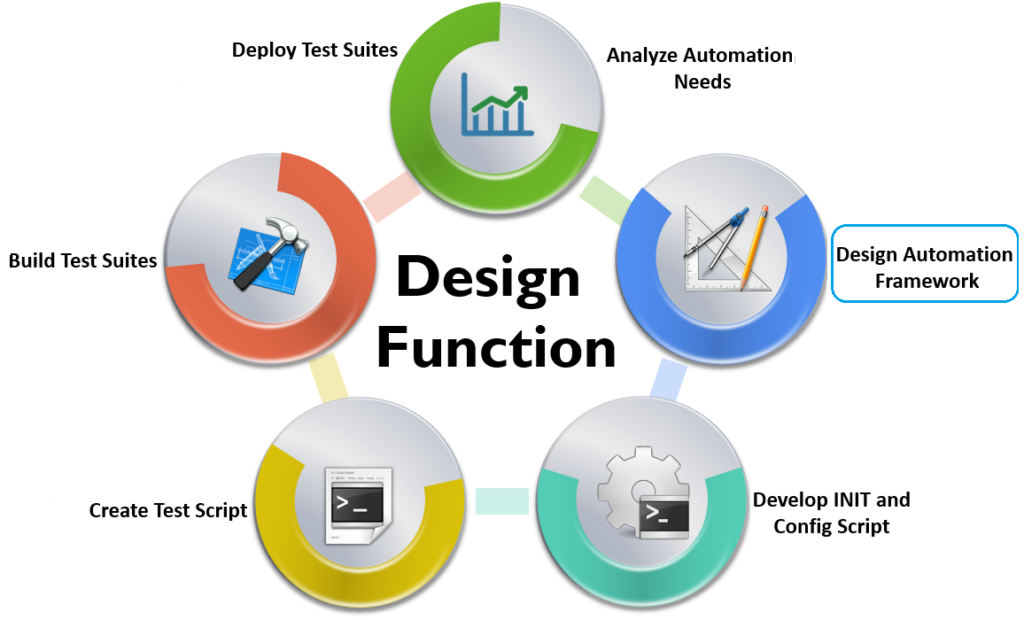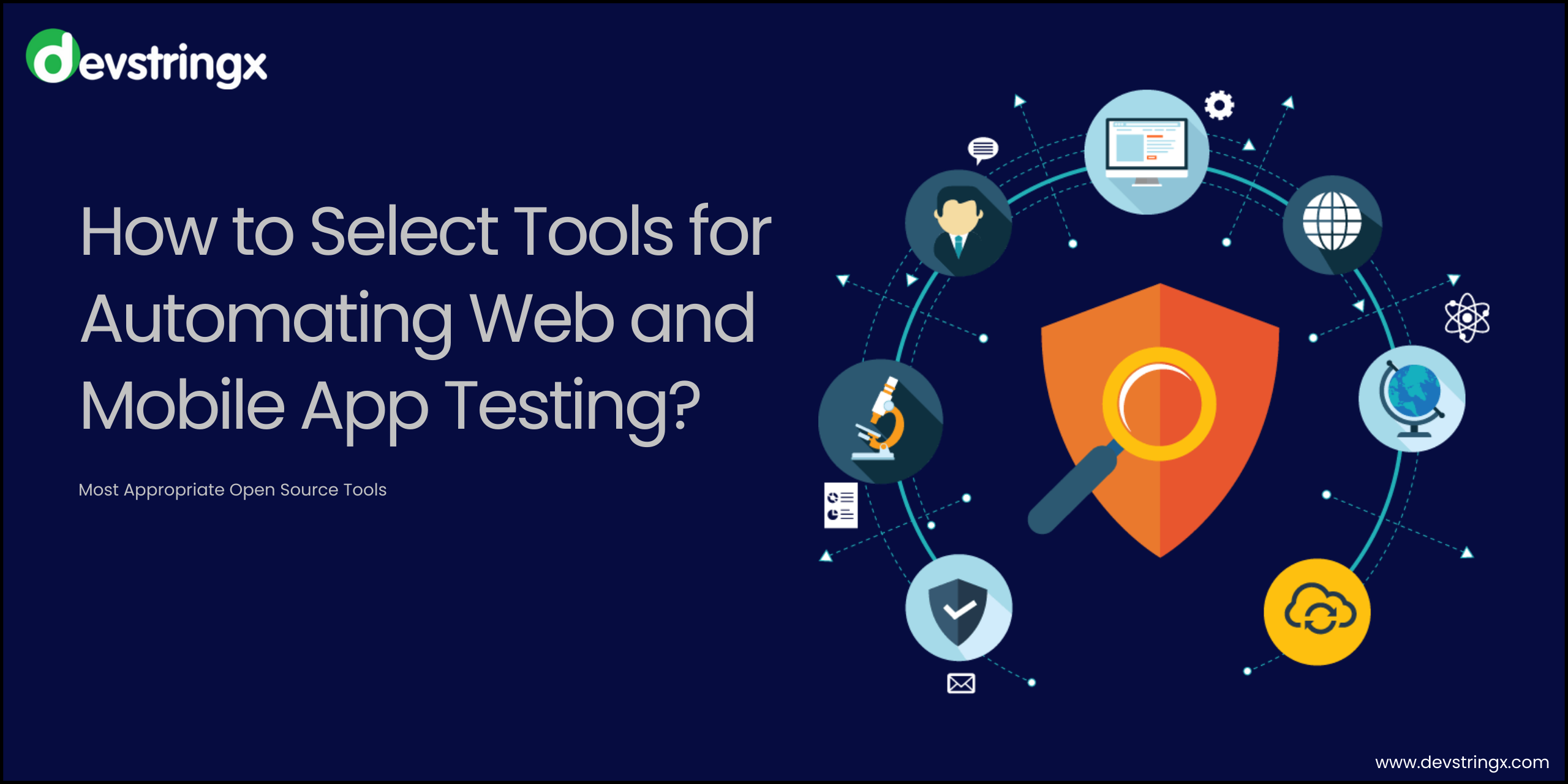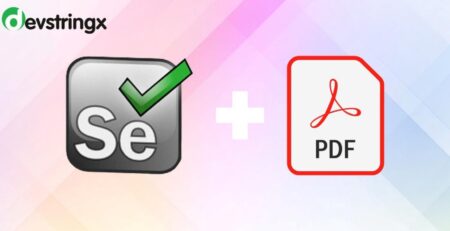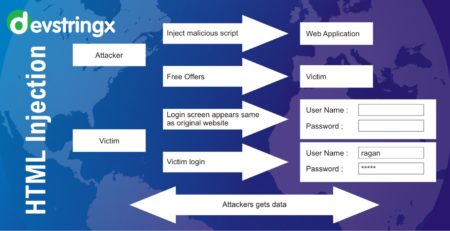How to Select Tools to Automate Web and Mobile App Testing? – Devstringx
Automation testing is the process of ensuring that software and other technological items meet specific standards. It’s essentially a test to ensure that the equipment or software accomplishes exactly what it’s supposed to do. It checks for bugs, faults, and any other issues that may arise throughout the creation of a product.
Testing web-based user interfaces and mobile applications have been more difficult for a long time, and the only solutions that are now available are mainly commercial. This has changed as the popularity of web-based apps has grown, and there are a variety of tools available to assist us, including open-source solutions.
It is commonly assumed that test automation is an opulent and time-consuming procedure. However, this is not the case, especially if you take small steps. Choosing a tool stack is arguably one of the most challenging considerations you’ll have to make before implementing automated testing.
For the project, we will select a more appropriate and simple tool to learn. These various impacts have been provided to make our duty easier.
The First Influence – What Type of Functional Testing Has to be Automated?
When selecting an online auto test tool, it’s critical to first determine your testing requirements. Initially, your choice will be based on the purpose of your testing. You can find more information in the table below.
| Type of Request | Purpose |
|
You must test a system on the front end from a GUI, as if you were a real user, to ensure that all functionalities are working properly. |
| 2. User Interface Testing | You must determine whether any UI deviations have occurred. |
| 3. Back-end functional testing (API testing) | You must test your application’s functions using REST or SOAP APIs. |
The most universal tests are functional tests. However, in recent years, graphical interface tests have grown in popularity, as it is critical to obtain results that address not just the product’s functional state, but also the integrity and flexibility of its interface.
Furthermore, all web applications operate on the client-server model. As a result, it’s crucial to check them at the request-response level first. To get a better sense, look at the illustration below.
The Second Influence. What Type of Applications Has to be Automated?
The next step is to identify the different sorts of applications for which automated tests will be built.
| Type of Request | Description |
|
These applications run in a web browser, or on a website, in other words |
| 2. Android Application | Google Play Market was used to install mobile applications. |
| 3. IOS Application | Apps for mobile devices are downloaded through the App Store. |
| 4. Windows Phone
Application |
Microsoft Store apps are installed on mobile devices. |
All of these applications necessitate a unique strategy for selecting an automation technology.
Selenium WebDriver should be used to automate web-based applications since it provides a native interface for dealing with a browser like a genuine user. All of the most popular browsers, including Mozilla Firefox, Google Chrome, Opera, Internet Explorer, Edge, and Safari, support WebDriver.
Read Also:- GitLab CI Automation Testing Tool
For automated applications installed from stores, Appium with Selenium WebDriver is required for mobile native applications on Android, iOS, and Windows Phone. Appium provides a user interface for working with a device as if it were a real user using the WebDriver protocol, allowing for actions such as touch, swipe, and so on.
The Third Influence. For the tests, What Language Will be Used?
It’s important not to rush into selecting a programming language for automated testing. If we are just getting started, thinking about and addressing this will help us position ourselves for greater success.
Answering four easy questions is an excellent approach to figuring out which language to use.
- – Who will be in charge of the automated tests?
- – What language has your development team used?
- – What are the language necessities of customers?
Of course, there will be other nontechnical aspects that will vary depending on the situation.
The Fourth Influence- What Additional Tools Will be Used or What Tools Has Previously Used?
The development process is usually successful by using various tools. These include the tools for:
-
- Application management lifecycle
- Deployment and building a project
- Continuous integration process
Here’s a Rundown of Some of the Resources:
| Tool | Examples |
| Tools for managing the lifecycle | Jira, Redmine, Mantis, and Bugzilla are examples of project management software. |
| Build Tools | Gradle, Maven, and ANT |
| Tools for continuous integration and deployment | Hudson, Jenkins, GitLab, AWS code Deploy, and Octopus Deploy |
When deciding whether or not to use automated testing on your project, consider the variety of tools available. To summarize, in order to make a final decision, we must: hold a meeting with the project team to review the requirements that must be accomplished; Obtain more information about the tools that were utilized during the development process.
Read Also:- Cucumber Automation Testing Tool
Compare and contrast all requirements and information with available tools before making a decision.
put the instrument to the test and examine the outcomes.
Add or remove some libraries or related tools from your stack tool to correct it.

















